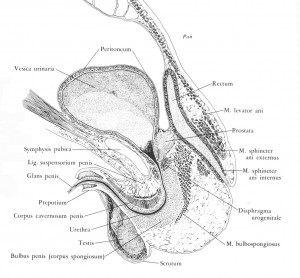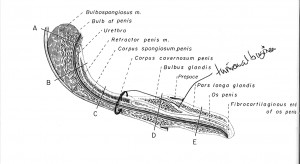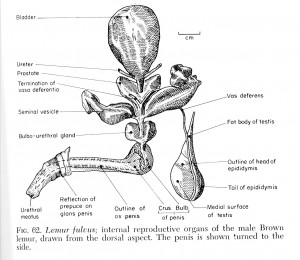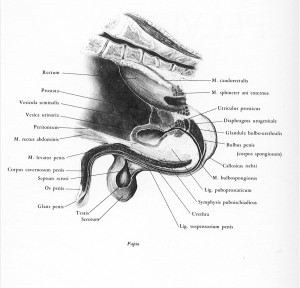
March 4, 2010
If you go deeply into the backchannel “invisible college” that occurs within Sasquatch studies and scholarship, you might be surprised by the level of intellectual interplay that is often present in that realm. As an example, let me share with you an ongoing debate that is taking place right now. Here’s an exclusive peek.
Idaho professor of anatomy and anthropology Jeff Meldrum and California registered nurse Bobbie Short are conducting an exchange about what makes Sasquatch/Bigfoot what they are. It has included whether or not Bigfoot has a bone (called a baculum) in the penis of the males. (Visual examples of the baculum of some mammals are infrequently published and sold to museums; see here.)
In the most recent round, Ms. Short corrected Dr. Meldrum on a point of inaccuracy, and he stood corrected. See here for what has transpired thusfar.
However, most currently, Dr. Meldrum feels that Ms. Short “misrepresented the details of the matter and posted a rather misleading retort.”
Dr. Meldrum, therefore, thinks that the correct airing of the following at Cryptomundo will assist in straightening out the record appropriately.
What you find below is complete with illustrations, from Dr. Meldrum. It is given in plain text, as is, so as to retain Dr. Meldrum’s embedded italics, in situ, used by him for emphasis and with Latin phrases/words.
**************
A Reply to the Sasquatch and the Baculum by Jeff Meldrum
Bobbie Short is correct in pointing out my misspeak. Indeed, a very modest penis bone is found generally among monkeys and apes, although greatly reduced or sometimes absent in great apes. My point was, and let’s be clear – this is a vestigal structure in apes, even in monkeys, by comparison to other mammals. Its size and contribution to erection is minimal at best. Schultz states “…in the great apes it has become reduced to a slender rudiment, measuring, e.g., only 11 mm in full-grown gorilla…” (Schultz, 1969 p. 177). That’s a mere 3/8 inch long. It is limited to the glans. Its contribution to successful intromission is minimal to non-existent!
Swindler and Wood do not even figure an os penis in their depiction of a chimpanzee (Swindler and Wood, 1982, p. 229):

In dogs and primates at least, it is not a retractable structure. It resides within the distal portion of the penis. It develops as an ossification of the fused distal ends of the corpora cavernosa. The statement that the baculum is a bone that “facilitates an erection without blood” is altogether incorrect. The dorsal veins of the penis constrict and the corpora cavernosa engorge with blood during an erection in mammals with a baculum, just as in humans without one. The baculum assists in erection in mammals where the size and length provide a significant contribution. It does not replace tumescence due to vascular congestion, particularly not among the great apes.

Dog. (Evans and de Lahunta, p. 226).
It is relatively large in primitive primates, i.e., prosimians, such as the lemur pictured below. Following are additional figures illustrating the diminutive size in monkeys (baboon and macaque).

Lemur. (Osman Hill, 1972, p. 113).

Baboon. (Swindler and Wood, p. 228)

Macaque. (Hartman and Straus, 1933, p. 238)
The assertion that the Sasquatch lacks a baculum or has a vestigial and variably present one, is a point of inference that remains highly speculative at present. The implications of its presence or absence as a rudiment are overstated by Short. It should be noted that according to Schultz, the baculum is lacking in tarsiers, woolly monkeys, spider monkeys, in addition to humans. Its presence or absence does not constitute a sole basis for a line of demarcation between humans and apes.
My query as to why the caller posed this question was not to embarrass him. The relevance of his question was unclear to me. He was not able to articulate from whence his interest stemmed. After reading Short’s essay I see, although I do not agree with, the rationale. I have avoided participation in the discussions of near-ape versus near-human status of sasquatch because those most dogmatic in their opinions are often highly emotional in their convictions, frequently based on highly subjective personal experiences or assertions. Sasquatch is not human because it were to walk bipedally, or lack a baculum, or even have primitive language. Similar arguments raged over the taxonomic status of neandertals – Homo sapiens neandertalensis? or Homo neandertalensis? It has only been conclusively decided since the sequencing of its DNA, which shows it is a distinct species that avoided widespread admixture for over 10 millennia of cohabitation in Europe. Until we have DNA sequence data for Sasquatch the point remains moot.
References:
Evans, HE and de Lahunta, A. Miller’s Guide to the Dissection of the Dog. Philadelphia: WB Saunders, 1988.
Hartman, CG and Straus, Jr., WL (eds.). The Anatomy of the Rhesus Monkey. New York: Hafner, 1933.
Osman Hill, WC. Evolutionary Biology of the Primates. New York: Academic Press, 1972.
Schultz, AH. The Life of the Primates. New York: Universe Books, 1969.
Swindler, DR and Wood, CD. An Atlas of Primate Gross Anatomy. Malabar, FL: Krieger Publishing, 1982.
About Loren Coleman
Loren Coleman is one of the world’s leading cryptozoologists, some say “the” leading living cryptozoologist. Certainly, he is acknowledged as the current living American researcher and writer who has most popularized cryptozoology in the late 20th and early 21st centuries.
Starting his fieldwork and investigations in 1960, after traveling and trekking extensively in pursuit of cryptozoological mysteries, Coleman began writing to share his experiences in 1969. An honorary member of Ivan T. Sanderson’s Society for the Investigation of the Unexplained in the 1970s, Coleman has been bestowed with similar honorary memberships of the North Idaho College Cryptozoology Club in 1983, and in subsequent years, that of the British Columbia Scientific Cryptozoology Club, CryptoSafari International, and other international organizations. He was also a Life Member and Benefactor of the International Society of Cryptozoology (now-defunct).
Loren Coleman’s daily blog, as a member of the Cryptomundo Team, served as an ongoing avenue of communication for the ever-growing body of cryptozoo news from 2005 through 2013. He returned as an infrequent contributor beginning Halloween week of 2015.
Coleman is the founder in 2003, and current director of the International Cryptozoology Museum in Portland, Maine.
Filed under Bigfoot, Cryptomundo Exclusive, CryptoZoo News, Cryptozoologists, Cryptozoology, Evidence, Extinct, Forensic Science, Fossil Finds, Men in Cryptozoology, Sasquatch, Women in Cryptozoology